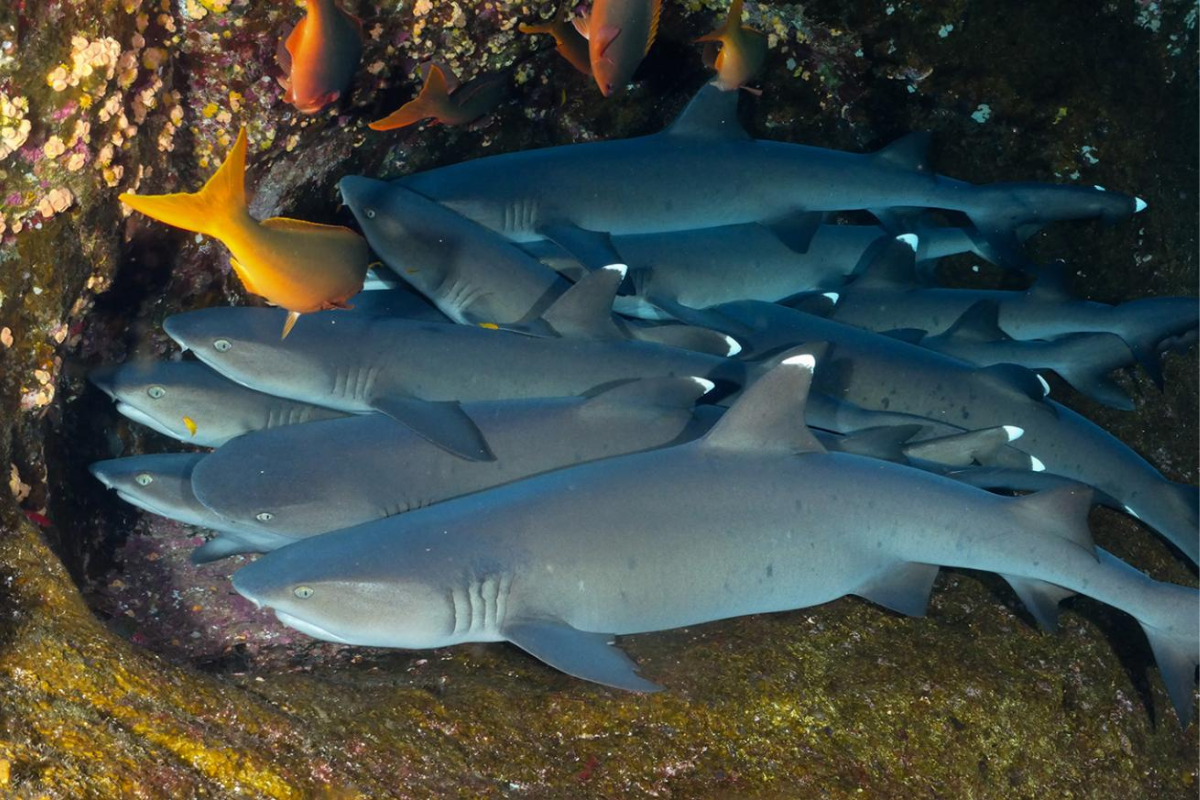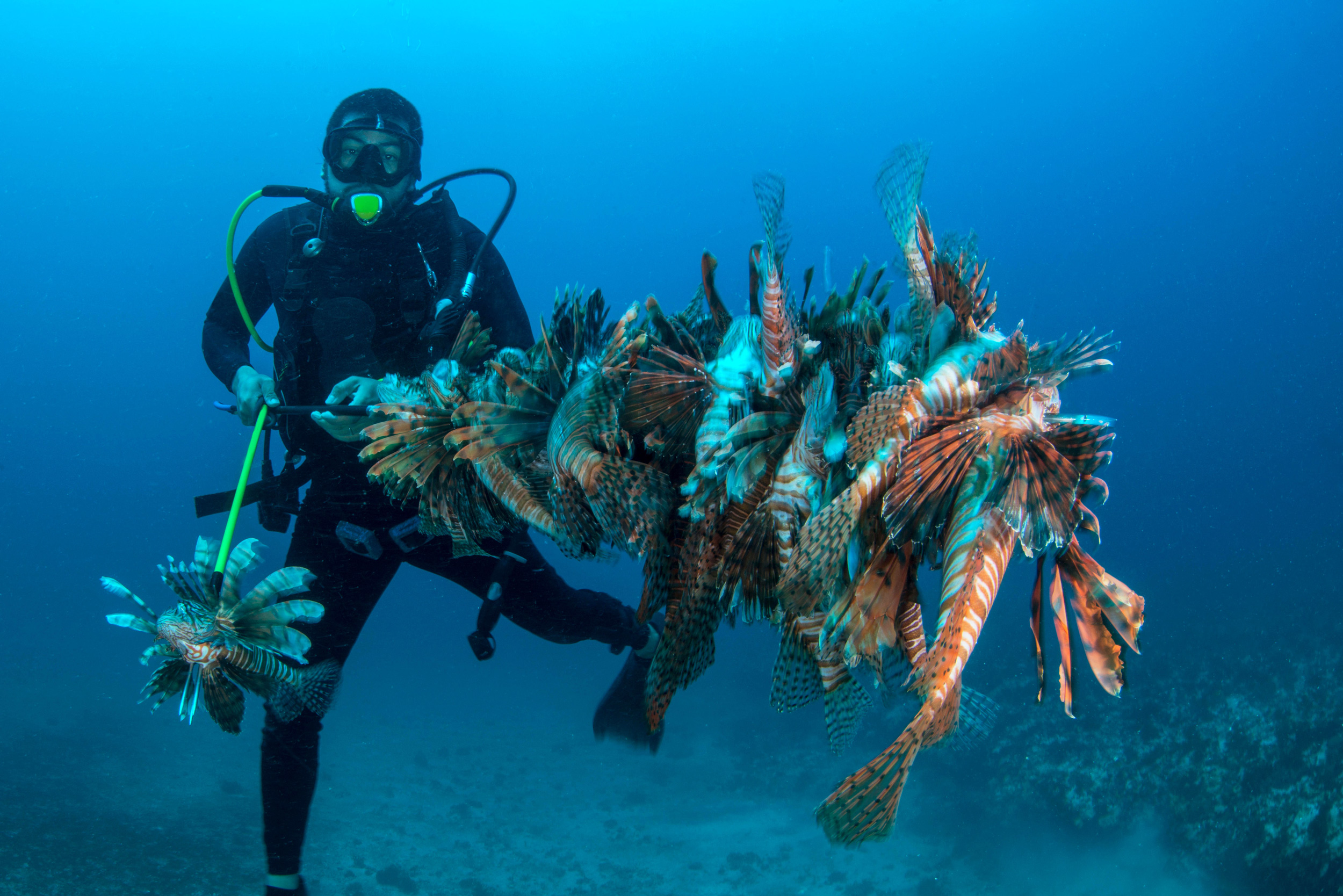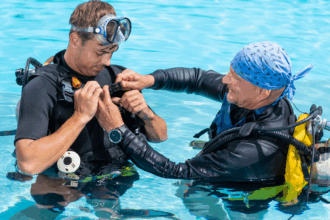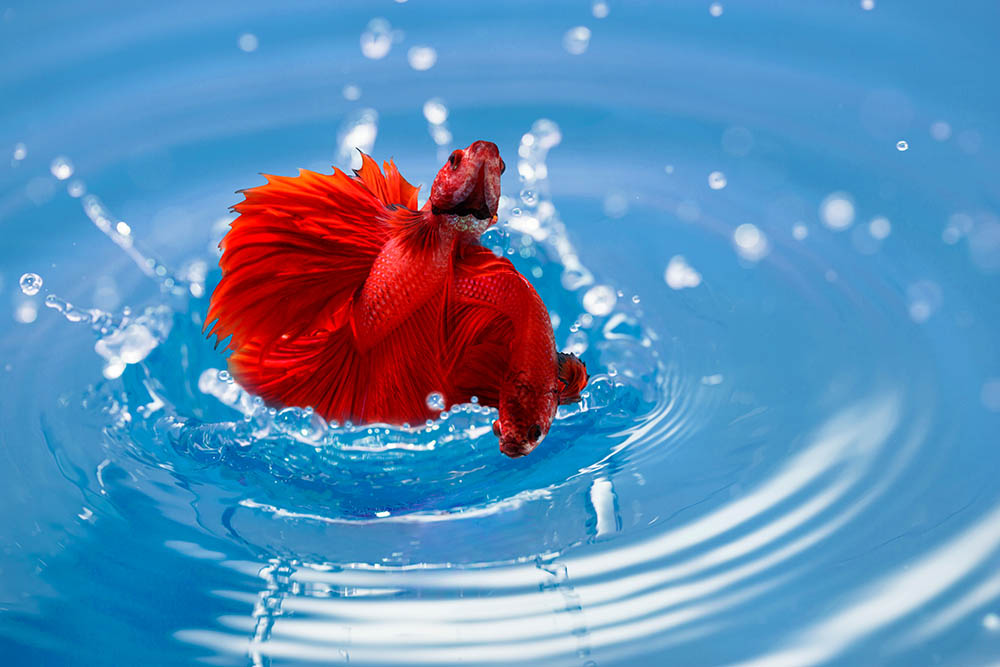Scuba diving is one of the most thrilling ways to explore the underwater world, but have you ever wondered when scuba gear was invented? The story of how humans first learned to breathe beneath the waves is full of creativity, courage, and incredible innovation. From ancient diving bells to the modern, lightweight scuba systems we use today, this journey through time shows how far human curiosity can go.
- The Origins of Scuba Diving — From Early Experiments to Modern Mastery
- Table of Contents
- Jacques Cousteau and Emile Gagnan — The True Founders of Modern Scuba Gear
- Evolution of Scuba Equipment Through the Decades
- Fascinating Scuba Diving Facts You Didn’t Know
- How Did Chris Survive So Long Without Oxygen?
- The Legacy of Scuba Gear — Shaping Adventure and Science
- FAQs About when was scuba gear invented
- Conclusion: The Spirit of Exploration Lives On
In this article, we’ll uncover the origins of scuba diving, trace the evolution of underwater gear, explore 7 fascinating facts, and reveal the inventors who made it possible for us to breathe freely under the sea.
The Origins of Scuba Diving — From Early Experiments to Modern Mastery
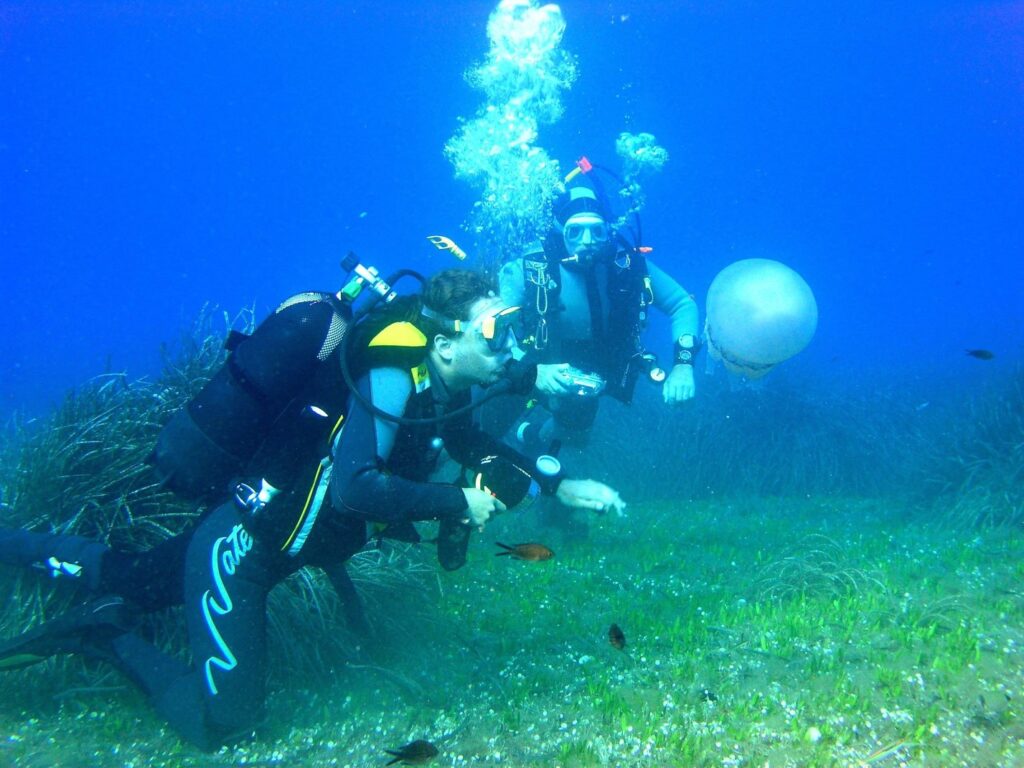
Table of Contents
The First Diving Bell: Ancient Underwater Innovation
Before scuba gear existed, humans still dreamed of exploring beneath the surface. The first recorded invention that allowed people to breathe underwater was the diving bell, developed as early as the 16th century. However, its concept dates even further back — possibly to ancient Greece.
The diving bell was essentially a large, inverted chamber trapped with air. Divers could enter the bell and breathe while submerged, though only for short periods. This primitive design was the earliest known attempt to solve the underwater breathing challenge and became a key inspiration for future scuba technology.
The diving bell marked the first step in the long quest for self-contained underwater breathing systems — the foundation of what would become scuba gear.
The First Diving Suit of 1797
Fast forward to 1797, when the first true diving suit was introduced. Invented by Karl Heinrich Klingert, this suit was made of waterproof leather and featured a metal helmet connected to an air hose from the surface. Though bulky and uncomfortable, it was revolutionary for its time.
The 1797 diving suit allowed divers to stay underwater longer and move with more flexibility. It inspired decades of innovation that would eventually lead to the creation of portable air tanks and regulators, paving the way for the scuba systems we recognize today.
Jacques Cousteau and Emile Gagnan — The True Founders of Modern Scuba Gear
When Did Jacques Cousteau Invent Scuba Gear?
While many contributed to underwater exploration, it was Jacques Cousteau and Emile Gagnan who invented the modern scuba gear in 1943. Together, they developed the Aqua-Lung, the world’s first successful self-contained underwater breathing apparatus (SCUBA).
Their invention made diving independent — no more air hoses from the surface. For the first time, divers could explore freely and safely for extended periods. The Aqua-Lung used compressed air stored in a tank and delivered it to the diver through a two-stage regulator that adjusted air pressure for easy breathing.
This groundbreaking invention changed ocean exploration forever and laid the foundation for recreational diving, marine research, and underwater filmmaking.
Was Scuba Used in WWII?
Yes — scuba technology was indeed used during World War II, though in its early stages. Before Cousteau’s Aqua-Lung became popular, several countries experimented with rebreathers for military divers, who needed to swim undetected for underwater sabotage or reconnaissance missions.
Military divers relied on oxygen-based rebreathers that produced no bubbles, keeping them stealthy. However, these early systems were dangerous — pure oxygen could become toxic at depth. After WWII, Cousteau’s air-based scuba systems replaced them, offering both safety and versatility.
Evolution of Scuba Equipment Through the Decades
From Air Tanks to Regulators — How Technology Advanced
The invention of the scuba tank was a crucial step in diving’s evolution. Early 20th-century engineers experimented with compressed air cylinders, but it was Cousteau and Gagnan’s Aqua-Lung that refined the concept and made it practical.
- Who invented the scuba tank?
While no single person can claim full credit, the modern version evolved from multiple innovations — particularly those by Cousteau, Gagnan, and industrial engineers improving gas storage.
Over the decades, materials evolved from heavy steel to lightweight aluminum and carbon fiber. Regulators became more efficient, and safety systems were added, making diving more comfortable and accessible than ever.
Old Scuba Gear Names and Styles
In the early days, scuba gear was known by several names:
- Aqua-Lung – the first modern scuba apparatus
- Rebreather – a closed-circuit system that recycles air
- Diving apparatus – a general term used in the 1800s and early 1900s
Compared to the sleek, colorful modern suits divers use today, early scuba equipment looked more like heavy industrial machinery. Yet, those early prototypes were the foundation of an industry that now thrives on efficiency, style, and safety.
Scuba Diving History Timeline
| Year | Invention/Event | Significance |
|---|---|---|
| 1535 | Diving bell introduced | First attempt at underwater breathing |
| 1797 | First diving suit | Early waterproof suit with air hose |
| 1825 | Demand valve invented | Regulated air delivery underwater |
| 1943 | Aqua-Lung created | Modern scuba era begins |
| 1950s | Recreational diving boom | Civilian use spreads globally |
| 1980s | Dive computers introduced | Enhanced safety and precision |
| 2000s | Digital & AI tech integration | Smart diving gear for modern explorers |
Fascinating Scuba Diving Facts You Didn’t Know
- “SCUBA” is actually an acronym. It stands for Self-Contained Underwater Breathing Apparatus.
- The deepest recorded scuba dive was over 1,090 feet, achieved by Egyptian diver Ahmed Gabr in 2014.
- Fish react to divers’ bubbles. Marine biologists have observed that bubbles change fish behavior — some are curious, others flee.
- Jacques Cousteau was also a filmmaker. His documentaries introduced millions to the beauty of the ocean.
- Early divers used manual air pumps. Before tanks, surface crews hand-pumped air through hoses to divers.
- Many WWII shipwrecks became dive sites. These underwater relics attract divers worldwide today.
- Modern scuba gear uses eco-friendly materials. Manufacturers now focus on sustainability, reducing marine pollution.
These facts show how scuba diving isn’t just a sport — it’s a blend of science, technology, and deep human curiosity.
How Did Chris Survive So Long Without Oxygen?
This question, often asked online, refers to real-life diving survival stories. Divers like Chris Lemons, a commercial diver who survived for more than 30 minutes without oxygen after an accident in the North Sea, showcase the strength of both human physiology and modern technology.
Here’s how survival was possible:
- Rebreathers can store small pockets of breathable gas even when disconnected.
- Cold water slows metabolism, reducing oxygen demand.
- Training enables divers to remain calm under extreme pressure.
Stories like Chris’s highlight how innovations in scuba design and safety gear have made underwater work safer than ever before.
The Legacy of Scuba Gear — Shaping Adventure and Science
The invention of scuba gear did more than allow us to explore coral reefs; it changed how we understand the world beneath the waves. Scuba diving opened new doors for:
- Marine biology and oceanography
- Underwater archaeology
- Environmental conservation
- Cinematic storytelling and photography
For adventure seekers, scuba diving represents freedom — the ability to explore another planet without leaving Earth. For students and history buffs, it’s a testament to centuries of innovation and collaboration.
As technology advances, future scuba systems may include AI-powered monitoring, wireless communication, and sustainable materials, taking ocean exploration to even greater depths.
FAQs About when was scuba gear invented
Who first invented scuba diving gear?
Jacques Cousteau and Emile Gagnan invented modern scuba gear, known as the Aqua-Lung, in 1943. It was the first truly self-contained underwater breathing system.
When was the first scuba gear made?
Although early prototypes existed before, the first functional scuba gear was made in 1943 by Cousteau and Gagnan, marking the start of modern scuba diving.
Was scuba used in WWII?
Yes. Military divers used rebreathers for stealth missions during World War II. After the war, scuba technology advanced for civilian and scientific use.
What was the old scuba gear called?
Old scuba gear was often referred to as “Aqua-Lung,” “rebreather,” or “diving apparatus.” These were the forerunners of the sleek systems used today.
When was the diving bell invented?
The diving bell dates back to the 16th century, serving as the earliest known underwater breathing chamber.
Who invented the scuba tank?
While Cousteau and Gagnan perfected its use, early versions of compressed-air tanks were designed by 19th-century engineers experimenting with pressurized gas storage.
When was the first diving suit invented?
Karl Heinrich Klingert created the first practical diving suit in 1797, combining waterproof leather with surface-supplied air.
Conclusion: The Spirit of Exploration Lives On
The history of scuba gear is more than a timeline of inventions — it’s the story of human determination to explore the unknown. From the diving bells of ancient times to the Aqua-Lung revolution and today’s smart dive computers, each innovation has brought us closer to the ocean’s heart.
Next time you strap on your fins and mask, remember — you’re part of a centuries-old dream that began with a single question:
“How can we breathe underwater?”
And now, thanks to those who dared to find the answer, we can explore an entirely new world.
🌊 Explore More Scuba Adventures
Dive deeper into the world of underwater exploration, guides, and gear insights at ScoobadiveGuide.com. Whether you’re a beginner or an experienced diver, discover tips, history, and adventures that make the ocean come alive.

